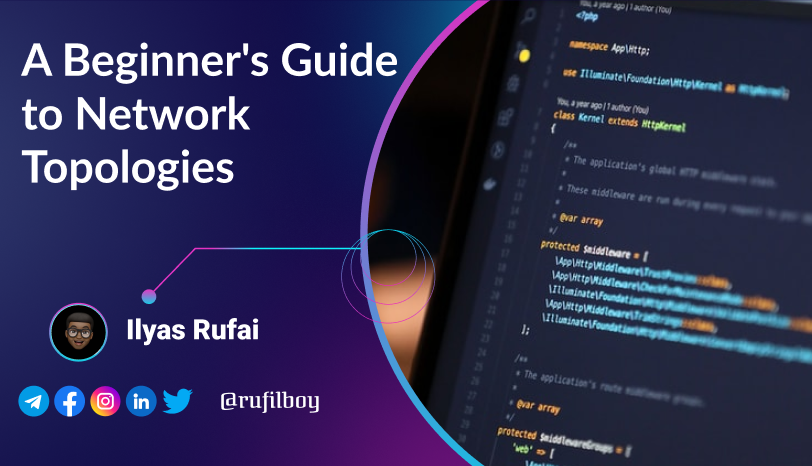A Beginner's Guide to Network Topologies
 ILYAS RUFAI
ILYAS RUFAITable of contents

A network topology refers to the physical or logical layout of interconnected devices, nodes, and links that make up a computer network. The choice of network topology can have a significant impact on the performance, reliability, and cost of the network. In this blog, I'll take a closer look at the most common network topologies and their advantages and disadvantages.
Bus Topology: A bus topology is a simple and cost-effective network topology where all devices are connected to a single communication line or bus. The bus acts as a shared communication medium, and each device is connected to it through a T-connector. The bus topology is easy to implement and requires minimal cabling, making it suitable for small networks with few devices. However, the main disadvantage of this topology is its limited scalability. As the number of devices connected to the bus increases, the performance of the network decreases, and collisions become more frequent. Additionally, the failure of the bus cable can bring down the entire network.
Star Topology: A star topology is a popular and reliable network topology where all devices are connected to a central hub or switch. The hub acts as a central point of control, and each device is connected to it through a dedicated cable. The star topology is easy to expand and allows for the addition or removal of devices without disrupting the rest of the network. Additionally, the failure of one device does not affect the entire network, making it highly resilient. However, the main disadvantage of this topology is its cost. As each device requires a dedicated cable and a hub or switch, the cost of implementing a star topology can be significant.
Ring Topology: A ring topology connects all devices in a closed loop, where each device is connected to its adjacent devices. The ring topology is highly resilient and fault-tolerant, as data can flow in both directions, making it less susceptible to a single point of failure. Additionally, the ring topology is efficient, as data can be transmitted quickly and reliably. However, the main disadvantage of this topology is its limited scalability. The addition or removal of a device can disrupt the entire network, and the failure of one device can bring down the entire network.
Mesh Topology: A mesh topology connects each device to every other device in the network, creating a redundant network with multiple paths for data transmission. The mesh topology is highly resilient and fault-tolerant, as data can be routed through multiple paths if one path fails. Additionally, the mesh topology is efficient, as data can be transmitted quickly and reliably. However, the main disadvantage of this topology is its cost. As each device requires a dedicated cable to connect to every other device, the cost of implementing a mesh topology can be significant. Additionally, the complexity of the topology makes it difficult to manage and troubleshoot.
Hybrid Topology: A hybrid topology combines two or more different types of topologies to create a more robust and efficient network. For example, a hybrid topology may use a star topology for the main network and a ring topology for backup. The hybrid topology offers the benefits of multiple topologies while minimizing their disadvantages. However, the main disadvantage of this topology is its complexity. The design and implementation of a hybrid topology require careful planning and management to ensure that the network is efficient, reliable, and cost-effective.
In conclusion, the choice of network topology depends on the specific needs and requirements of the network. Each topology has its own set of advantages and disadvantages, and it is up to the network administrator to determine which topology is most appropriate for their organization. By carefully considering the pros and cons of each topology, network administrators can build reliable, efficient, and scalable networks that meet the needs of their users.
Subscribe to my newsletter
Read articles from ILYAS RUFAI directly inside your inbox. Subscribe to the newsletter, and don't miss out.
Written by

ILYAS RUFAI
ILYAS RUFAI
I'm a DevOps engineer | Technical Writer | Open Sourcer Building: https://logiq.netlify.app/